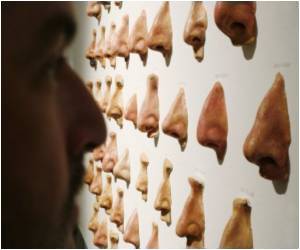Researchers have identified the Notch signaling pathway as the master regulatory switch that controls the differentiation of airway basal stem cells.

The work was published in Cell Stem Cell on June 3.
Together with the current ï¬ndings, recent studies suggest that the Notch signaling pathway represents a potential therapeutic target for airway remodeling and lung disease, he said.
"Notch is like an executive software package that helps to maintain the delicate balance of the epithelium, the lining of the airway," said senior author Brigid Hogan, Ph.D., chair of the Duke Department of Cell Biology. "The Notch pathway plays a role in other parts of the body, including neural stem cells, and this is the first time we have seen the results of the Notch pathway in airways. We have also found that the function of Notch signaling is conserved in basal cells from human airways."
Notch signaling dictates whether the daughters of basal stem cells assume one of two different fates, Hogan said. Sustained, high levels of Notch pathway activation result in more secretory cells. These make the needed amount of mucus to move out particles that need to be cleared. Low levels of Notch signal lead to ciliated cells, which act as brushes to move the mucus along toward clearance. Notch, however, isn't required for basal stem cells to proliferate and make additional basal cell daughters.
Airway disease, including chronic obstructive pulmonary disease, cystic fibrosis, asthma, acute allergies, and transplant complications, can range from fatal to debilitating, so understanding the secrets of how healthy cells can grow, and in the proper amounts, after injury is important. Fifty-five percent of deaths from lung disease result from changes in the small airways, Hogan said.
Advertisement
The next step for the team is to investigate the behavior of the daughters of basal cells to learn what machinery is involved in making them commit to various lineages, and how this system is coordinated to help restore lung function, Hogan said.
Advertisement











